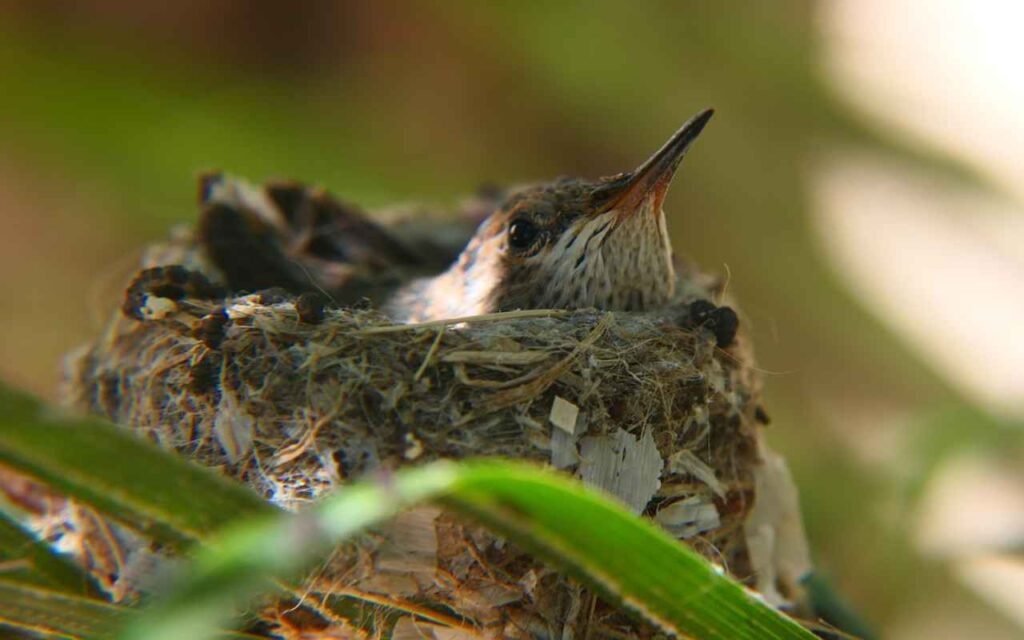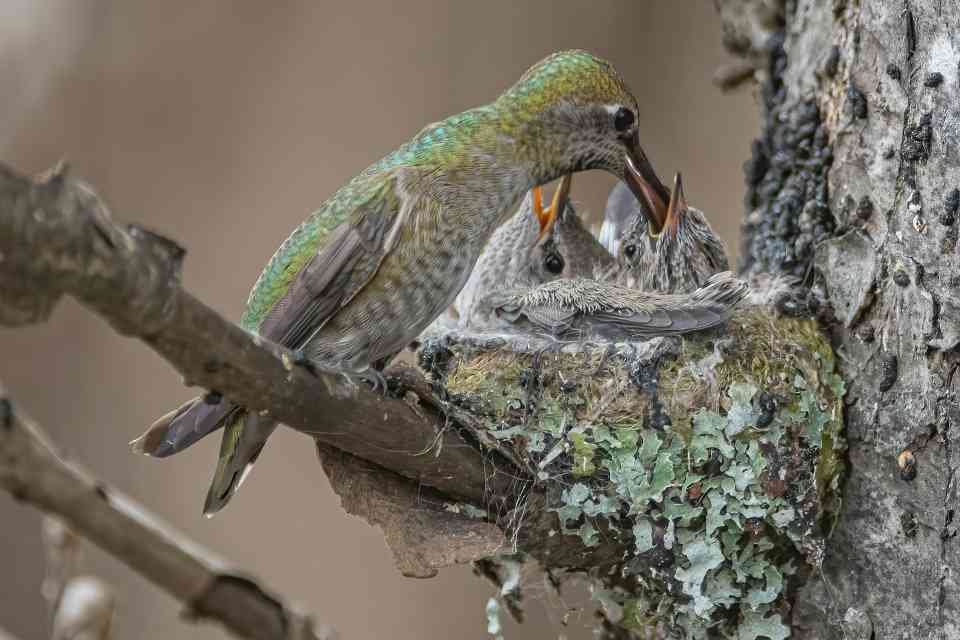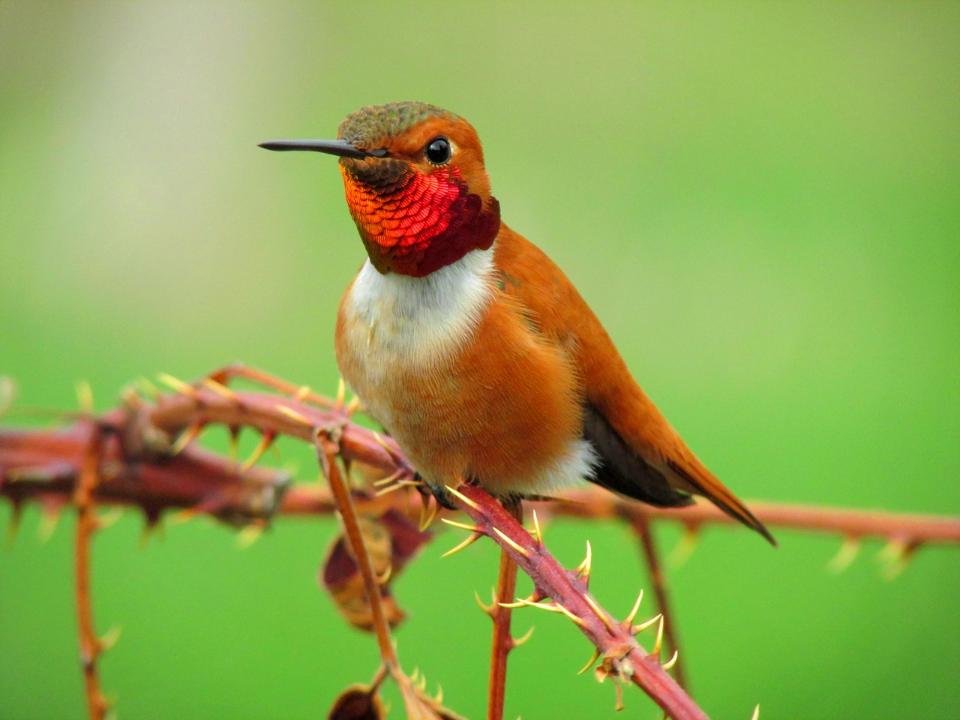Ever watched a hummingbird zip past your window and thought, “How on earth does something that tiny even survive? ” 😲 Same here. I’ve lost count of how many hours I’ve wasted (or enjoyed, depending on how you look at it) watching these little flying jewels.
They’re fascinating, stubborn, and let’s be honest, downright bossy when they guard their feeders. But behind the showy colors and high-speed aerobics is the life cycle of a hummingbird, which is surprisingly fragile and, IMO, almost miraculous.
So if you’ve ever wondered how a hummingbird goes from a jellybean-sized egg to a zippy adult with the metabolism of a caffeine addict, you’re in the right place.
Egg Stage: The Tiny Beginning
Picture this: a hummingbird egg is about the size of a jellybean or pea. Seriously, if you sneezed near one, you’d probably blow it out of the nest (don’t try it).
Female hummingbirds take nesting duties very seriously. Males? Not so much. Once the “courtship” is done, he’s out looking for his next conquest, leaving her to build the nest and raise the kids. Typical.
According to the American Bird Conservacy, females alone handle nest construction and chick-rearing duties.
Nest Building
- Nests are usually about the size of a golf ball.
- They’re made with plant fibers, spider silk, moss, and lichen.
- Spider silk is genius because it stretches as the chicks grow.
Fun fact: A female will spend days building the perfect nest. I once spotted one near my porch, and I swear she judged me every time I peeked out.
Hatching: Meet the Alien Babies
When the eggs hatch (after 2–3 weeks of incubation), the chicks look nothing like the glittering birds you see at feeders. They’re blind, naked, and about the size of a paperclip. Honestly, they look like squirmy little aliens.
How Long Do Baby Hummingbirds Stay in the Nest?
The mother has to feed them every 20 minutes to keep up with their insane growth. Imagine trying to babysit kids who double in size every few days. That’s her life.
She regurgitates a mix of nectar and insects into their mouths. Sounds gross, but it’s basically a baby smoothie packed with protein (Audubon Society).
Within a week, the chicks sprout pinfeathers (toothpick-like feather sheaths). By the second week, their eyes open and color hints appear.
Around 18–22 days, they test their wings. First flights are usually clumsy. Think bumper cars, but in the air. The mother still feeds them even after they leave.
The Smithsonian’s National Zoo confirms most hummingbirds fledge within three weeks, depending on species.
The Brutal Survival Rate
Here’s the tough part: only about half of hummingbird chicks survive to adulthood. Predation, weather, food shortages and infections all take a toll. (Wildlife Rescue Association)
Juvenile Stage: The Awkward Teen Years
Juvenile hummingbirds look like adults but with duller feathers. No shiny gorgets (that flashy throat patch) yet. They’re basically in bird puberty.
- They learn to forage, but still beg food from mom.
- They practice aerial acrobatics, hovering, darting, perching.
- Young males often start mock displays for practice.
I once watched a young hummingbird try to scare off a butterfly. Spoiler: the butterfly won.
Adult Stage: Masters of the Air
Once they hit adulthood, hummingbirds become the tiny tyrants of your garden. Territorial, aggressive, endlessly entertaining.
- Eat every 10–15 minutes.
- Nectar is the main fuel, but they need insects for protein.
- Can burn through their body weight in nectar daily (National Wildlife Federation).
Ever wondered why they never sit still? They literally can’t. Without constant food, they crash.
How Long Do Hummingbirds Live?
Average lifespan is 3–5 years, though some make it to 9+ (Birdfy). Predators, collisions, and exhaustion are the usual causes of death.
Courtship and Mating: The Drama
This is where it gets spicy. Males put on aerial shows to impress females, dives, loops, buzzes.
- An Anna’s Hummingbird can dive at over 50 mph.
- Some species produce a “sonic boom” with their tail feathers.
The female picks her guy, and then, he’s gone. No strings attached. Honestly, I respect her approach.
Migration: The Ultimate Endurance Test
Migration is the final stage in the annual cycle, and it’s nuts.
- Many species, like Ruby-throated Hummingbirds, fly from North America to Central America.
- Some make a non-stop 500-mile flight across the Gulf of Mexico.
- They rely entirely on fat reserves.
Earth Observatory confirms this epic Gulf crossing is one of the most remarkable bird migrations on Earth.
Imagine being the size of a chicken nugget and pulling off that trip. Kind of makes your last jog around the block look pathetic, huh?
Why the Hummingbird Life Cycle Matters
So why should you care? Besides the fact that hummingbirds are basically nature’s glitter-covered daredevils, their life cycle shows how fragile yet resilient they are.
If you’ve got feeders or native plants in your yard, you’re helping them survive. And IMO, that’s pretty awesome. 🙂
Quick Recap of the Life Cycle
- Egg stage: Tiny jellybean-sized eggs.
- Hatchlings: Ugly-cute alien babies.
- Nestlings: Rapid growth, feather sprouts.
- Juveniles: Awkward teens with dull feathers.
- Adults: Flashy, territorial, feeding machines.
- Courtship: Male stunts, female choice.
- Migration: Epic endurance flights.
- Lifespan: 3–5 years on average.
Final Thought
The next time you see a hummingbird at your feeder, think about everything it’s gone through, tiny egg, awkward teen, cross-continental athlete. Honestly, if humans had to pull off even half that, most of us would quit before breakfast.
So keep those feeders clean, plant some nectar-rich flowers, and enjoy the show. Because every time one of these little speed demons zips by, you’re watching a survival story in fast-forward.




